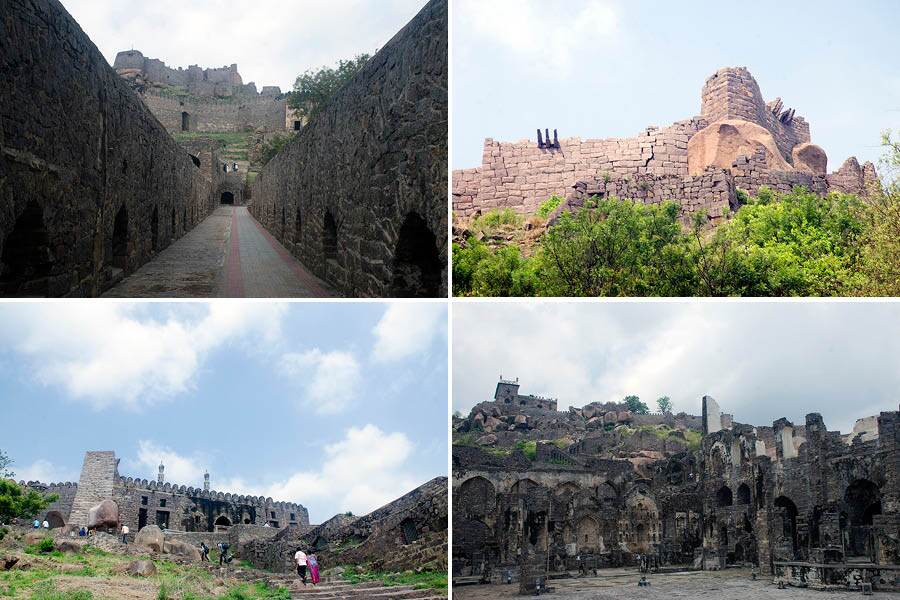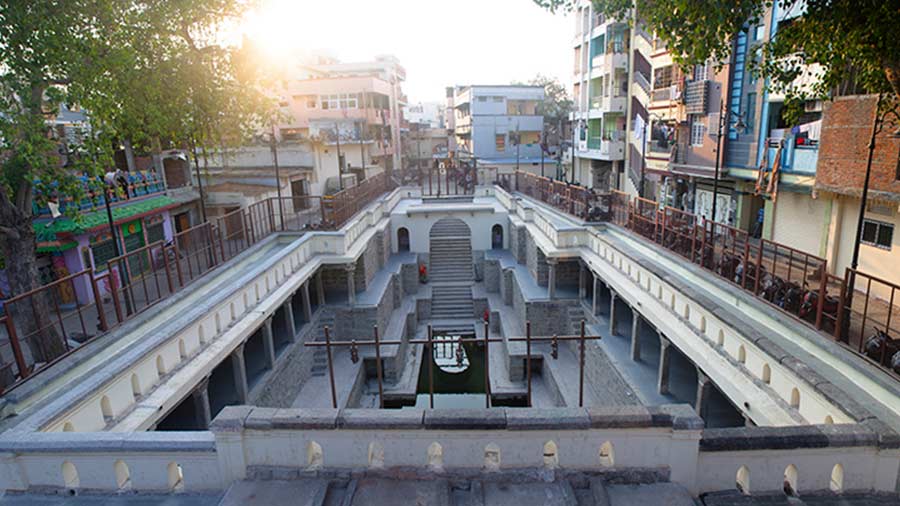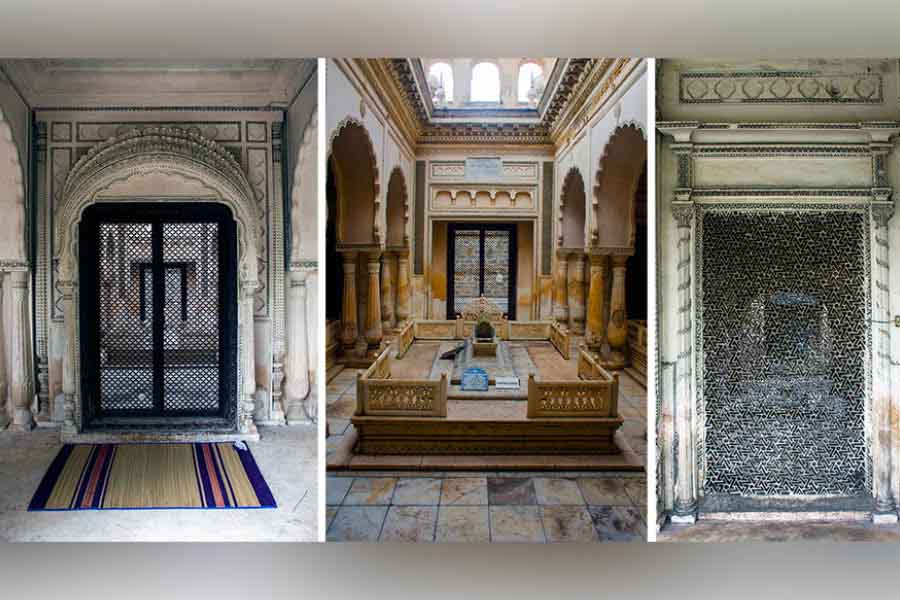Today, the mighty citadel of Golconda towers above the hi-tech city of Hyderabad. Located around 9km west of the Husain Sagar Lake, the mighty citadel is a prime tourist attraction of Hyderabad.
Nomenclature and legend

Tourists exploring the Golconda Fort
The Telugu meaning of Golkonda is shepherd’s hill (gol = shepherd and konda = hill) and indeed, it was a hill where sheepherders tended their goats and sheep. According to legend, while tending to the sheep and goats, a shepherd boy came across an idol of a god. The news soon spread and the local king of the Kakatiya dynasty took the initiative of enshrining the idol atop the hill and created a mud fortification around the shrine. This marked the beginning of the Golconda Fort in the 12th century CE, which later turned into a mighty citadel.
History
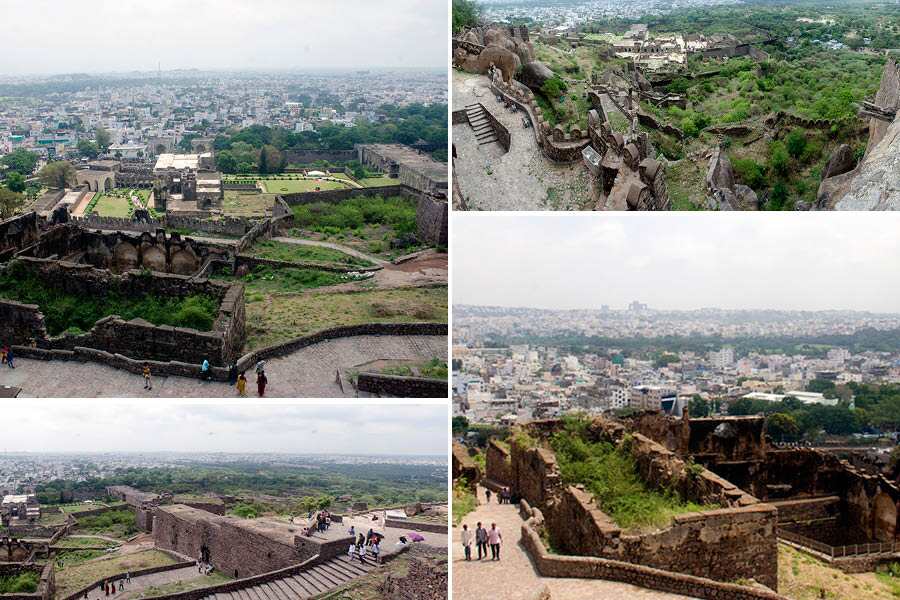
Ruins of the Golkonda Fort merge with the concrete jungle of the hi-tech city of Hyderabad
Around two centuries after the Kakatiyas, the Bahmani sultanate took control of the fort. Another two centuries later, the Qutub Shahi dynasty took control over the fort and turned it into a massive citadel spreading across the entire hilltop overlooking the city of Hyderabad. The massive citadel of the Qutub Shahi has protected them against invading armies, including the mighty Mughals. In 1656, during the reign of Shah Jahan, Aurangzeb, then governor of Deccan led a massive siege of Golconda Fort but was driven back. Later, during his own reign, Aurangzeb led another siege of Golconda.
The 1687 siege lasted eight months and it was only due the treachery of Sarandaz Khan, a military officer of Qutub Shah sultan, Aurangzeb was able to take control of the mighty Golconda Fort. Strangely after the Mughal conquest, the fort was more or less abandoned and slowly fell to ruins.
Architecture
Although in ruins, the massive citadel still dominates the entire hilltop on the western edge of Hyderabad. The massive walls of the fort meanders past rocky outcrops and boulders and contains a staggering 85 bastions. There are a total of eight gateways and four drawbridges spanning the protective moat. The interiors contain a number of royal apartments and halls along with temples, mosques, magazines, stables, etc.
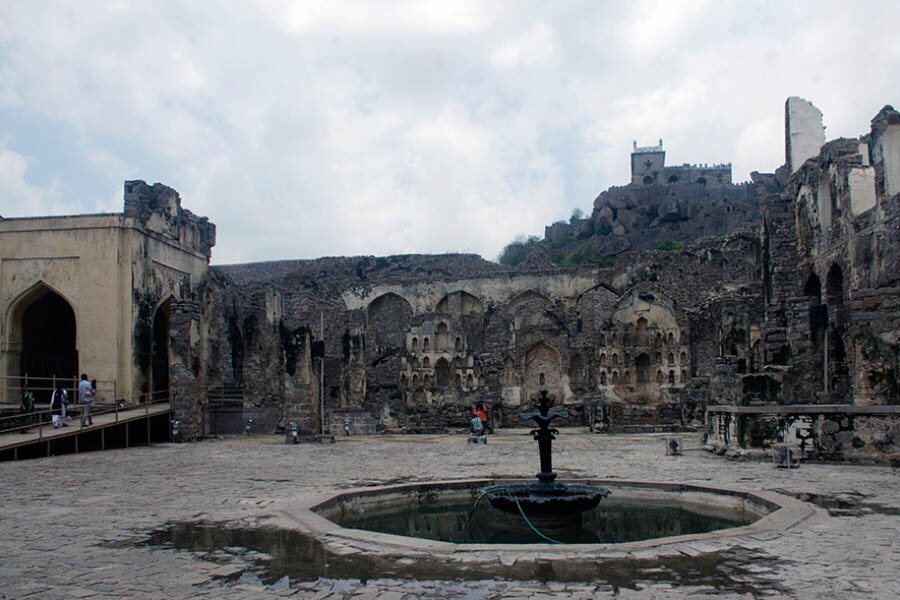
Central fountain of the royal complex with the Baradari towering above
Prominent structures
Some of the most prominent structures with the fort are:-
Bala Hissar Darwaza
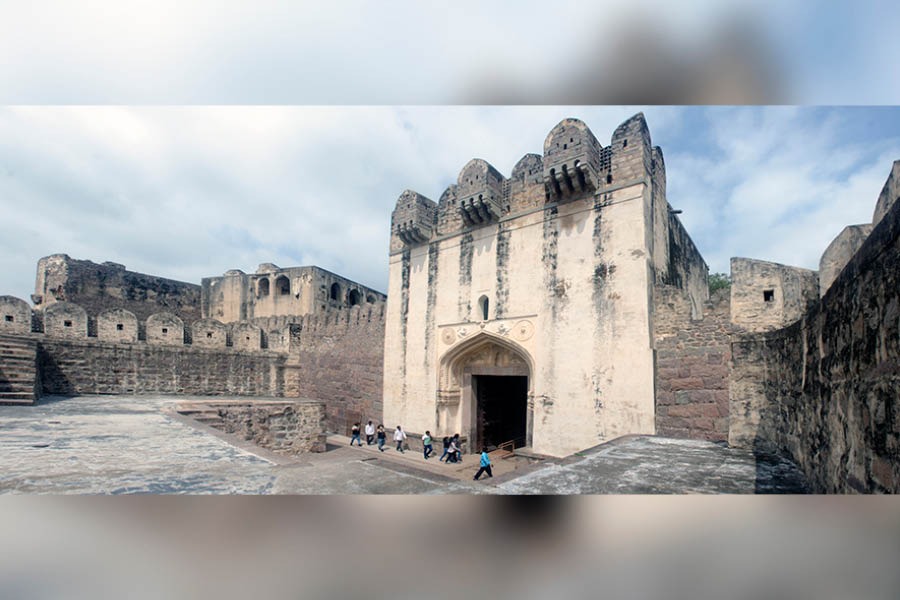
The Golconda Fort is said to have a unique acoustic system
Located on the eastern wall of the Golconda Fort, the Bala Hissar Darwaza presently serves as the entry gate of the fort. The massive gateway is topped with battlements and have intricate stucco work, which includes images of peacocks. The Golconda Fort is said to have a unique acoustic system and a sound made at the gate can be heard from the top most regions of the fort, located several kilometres away. Today, tourist and guides clap their hands hoping it is heard on the other end of the fort.
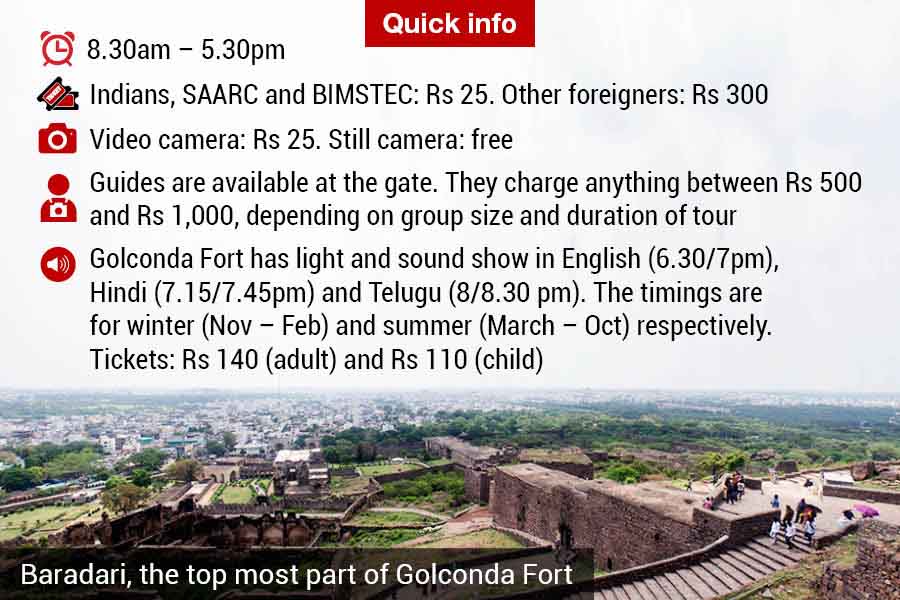
Mortuary Bath
This is located next to the Bala Hissar Gate and is used for bathing the royal dead bodies before they are being laid to rest in the nearby Qutub Shahi Tomb complex.
Nagina Bagh
This garden is divided into quadrants by paved pathways. It probably served as a market place for the elites.
Aslah Khana
The huge three storied building is complete with open and closed arches. It probably served as an arms depot.
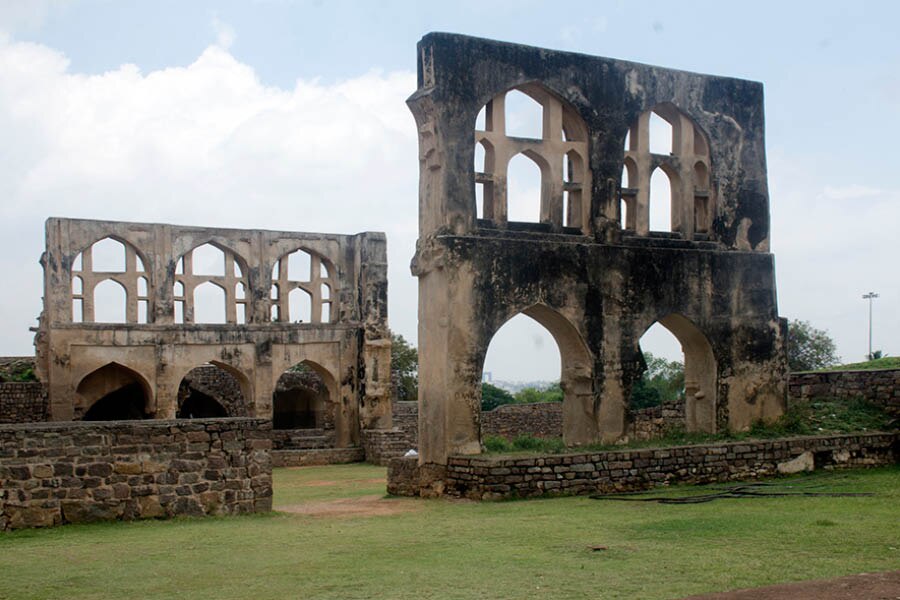
Arches inside the Golconda Fort
Taramati Mosque
Taramati was a famous dancer in the courts of the 7th sultan of Qutub Shahi dynasty. The small elegant mosque is located at the ground level of the fort. The yellow sandstone structure creates a sharp contrast with the black basalt stone backdrop.
Royal Palace
This too is located on the ground level and is complete with several large structure centered round a fountain.
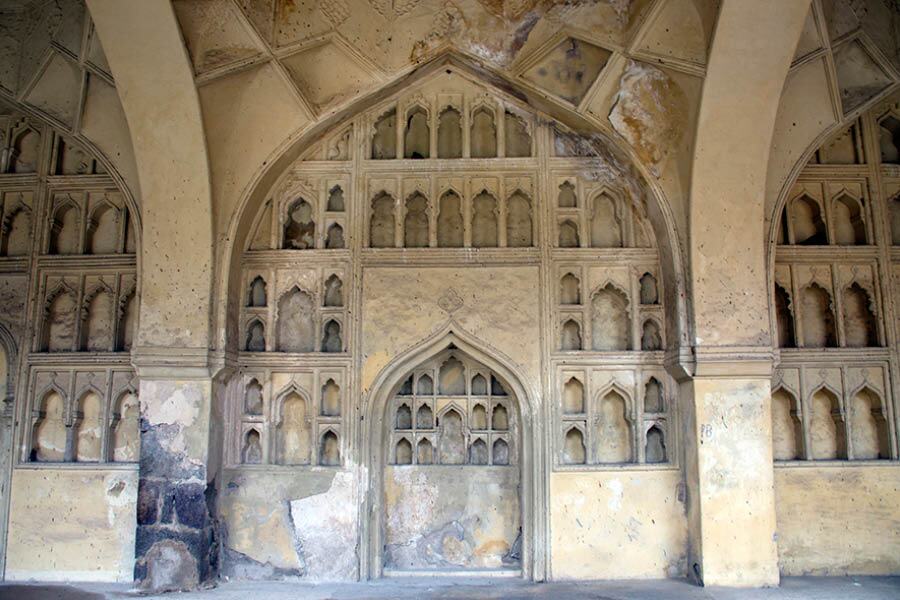
Decorative arches at the royal complex of Golconda Fort
Stepwell
The fort was once the residence of thousands of people along with livestock and no wonder it had an advanced water distribution system. A few dried-up stepwell and water channels can still be seen amid the ruins.
Ramdas Prison
This is located in the upper part of the fort and is approachable by a flight of stairs. The small room served as a store house and later used to imprison Ramdas, who served as a tax collector under the 8th and last Qutub Shahi sultan. He was charged for diverting money for the construction of a temple. He chiselled the idols of Ram, Lakshman and Sita on the walls before being released. Today, the chiselled figures are still there and the prison serves as a temple.
Ambar Khana
Located above the Ramdas prison is Amber Khana, a granary. It is approached by a flight of stairs
Maha Kali Temple
Next to the Ambar Khana lies the temple of Kali. It is a new structure surrounded by giant boulders complete with newly drawn paintings of gods and goddesses
Ibrahim Quli Qutub Shahi Mosque
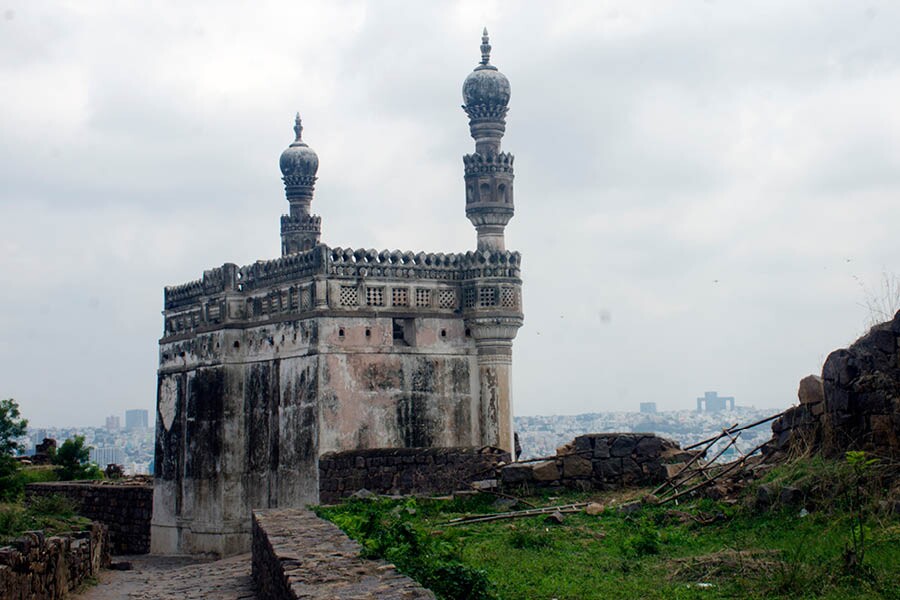
Nearby is the small but elegant mosque constructed and named after the fourth sultan of the Qutub Shahi dynasty.
Baradari or Darbar
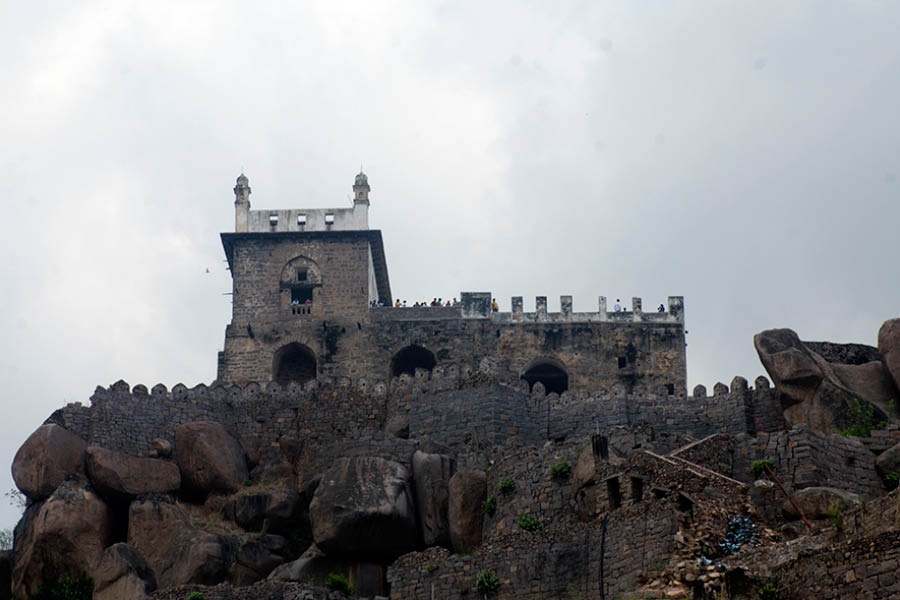
Baradari, the topmost part of Golconda Fort
Baradari literally translates into 12 gates. This structure once served as the durbar of the Qutub Shahi dynasty stands on the top most part of the Golconda Fort. It is a two-storeyed structure built on a high platform. It offers a great bird’s-eye view of the fort and all the way down to the concrete jungle of the hi-tech city of Hyderabad.
Exploring the fort
Today Golconda fort is a popular tourist destination of Hyderabad. The fort requires at least 2 hours to explore and requires long walks through undulating terrains. It is best to visit the fort early to avoid the crowd and also the heat (especially during the summer months)
